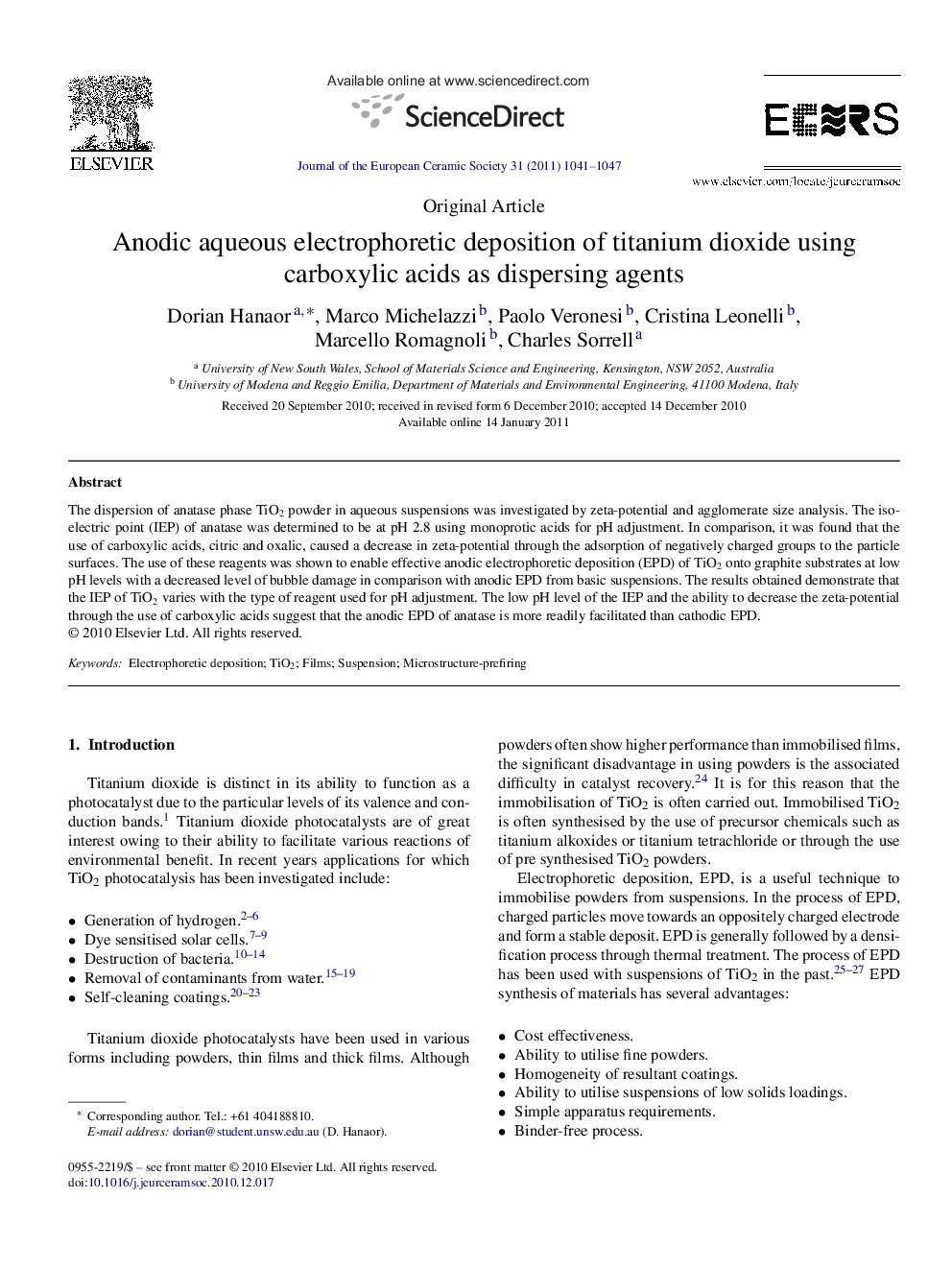| Article ID | Journal | Published Year | Pages | File Type |
|---|---|---|---|---|
| 1476559 | Journal of the European Ceramic Society | 2011 | 7 Pages |
The dispersion of anatase phase TiO2 powder in aqueous suspensions was investigated by zeta-potential and agglomerate size analysis. The iso-electric point (IEP) of anatase was determined to be at pH 2.8 using monoprotic acids for pH adjustment. In comparison, it was found that the use of carboxylic acids, citric and oxalic, caused a decrease in zeta-potential through the adsorption of negatively charged groups to the particle surfaces. The use of these reagents was shown to enable effective anodic electrophoretic deposition (EPD) of TiO2 onto graphite substrates at low pH levels with a decreased level of bubble damage in comparison with anodic EPD from basic suspensions. The results obtained demonstrate that the IEP of TiO2 varies with the type of reagent used for pH adjustment. The low pH level of the IEP and the ability to decrease the zeta-potential through the use of carboxylic acids suggest that the anodic EPD of anatase is more readily facilitated than cathodic EPD.
